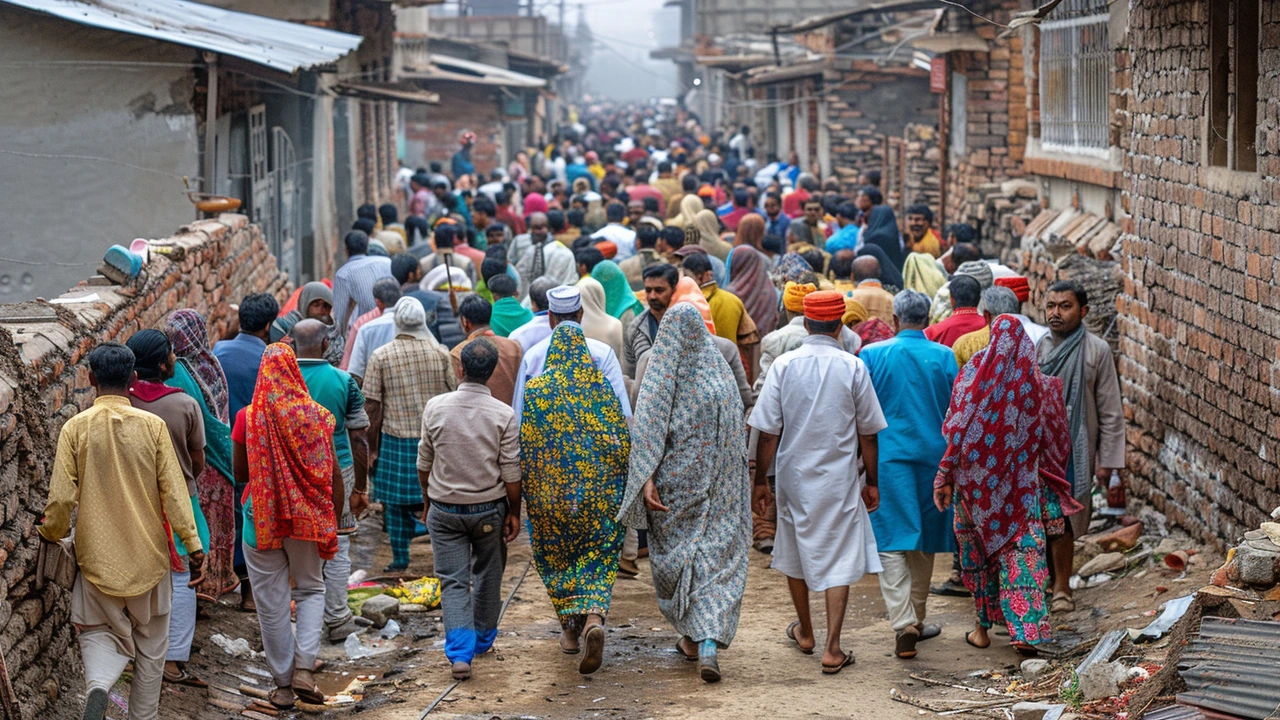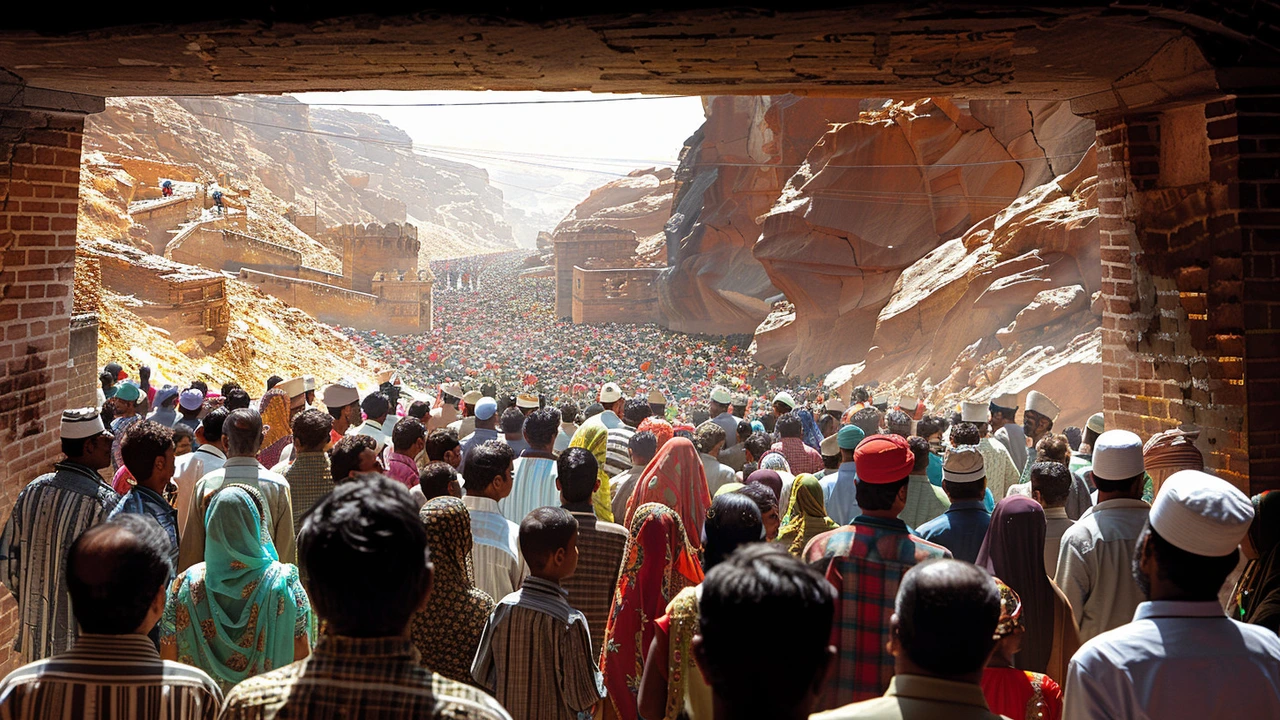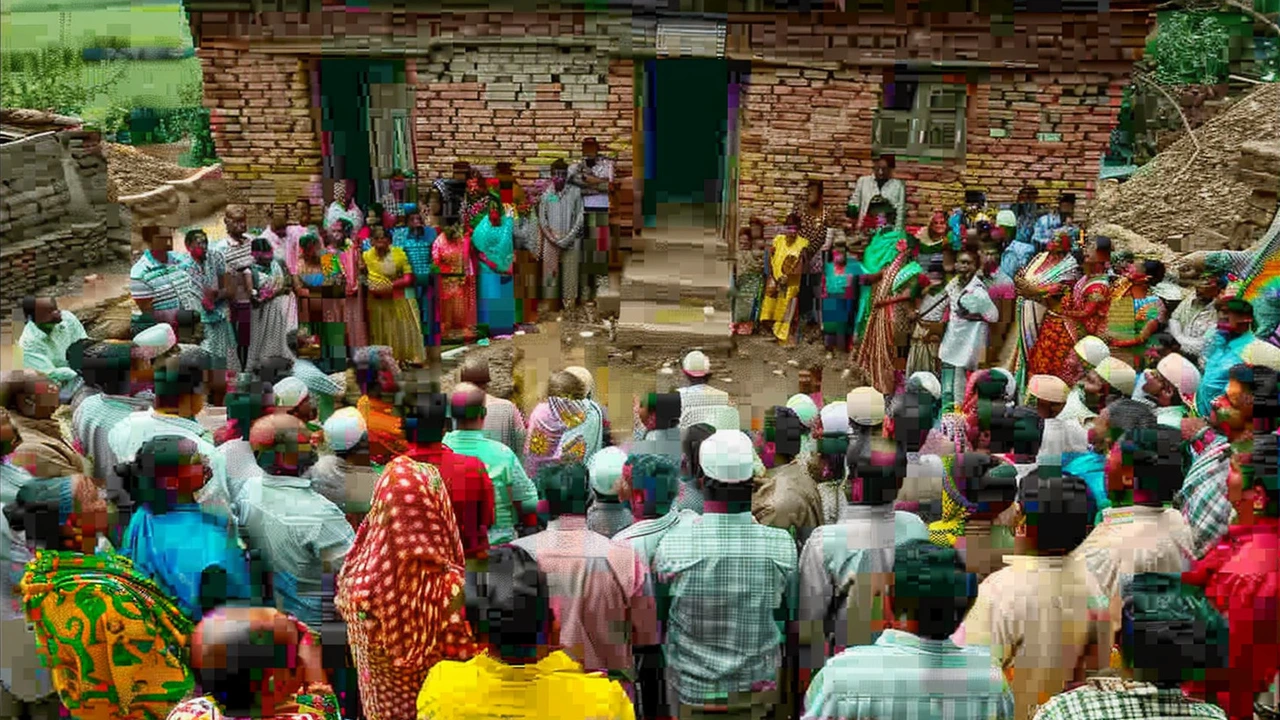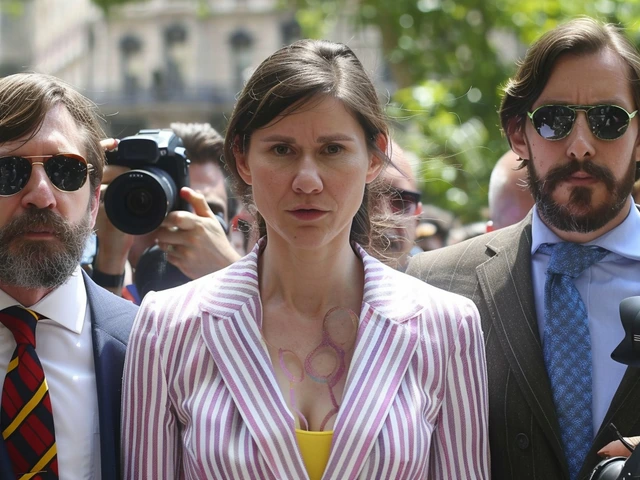Tragic Stampede in Hathras: What Happened?
On a seemingly ordinary Tuesday, tragedy struck a religious congregation in Hathras, Uttar Pradesh, led by self-styled godman Bhole Baba. The stampede claimed the lives of 121 people, primarily women, casting a shadow of grief over the event. The congregation, part of a routine spiritual gathering, turned into a chaotic stampede, leaving devastation in its wake. Bhole Baba, also known as Baba Narayan Hari and Saakar Vishwa Hari Bhole Baba, is a 60-year-old former police officer turned religious preacher. His influence spans several ashrams, with his largest one located in Mainpuri. Since the incident, security around his Mainpuri ashram has been enhanced, but Bhole Baba himself has not been present there.
The Enigma of Bhole Baba
Known for his captivating sermons, Bhole Baba often likens himself to God, drawing thousands of followers who revere him deeply. Hailing from Bahadurnagar village in Kasganj district, he has led a rather controversial life. Despite being childless, a poignant tale of him adopting a girl who later died adds a mysterious layer to his persona. Villagers recount how he kept her body at home for two days, hoping for a miraculous resurrection, a belief so strong that local authorities had to intervene to perform the cremation. Though Bhole Baba never solicits donations, his ashrams have thrived on voluntary contributions from his devoted followers.

The Incident: What Triggered the Stampede?
According to initial reports, the stampede began when Bhole Baba’s security detail reportedly pushed back the crowd that had surged forward to collect dirt from around his feet, believing it had sacred properties. The terrain, already slippery, turned the situation catastrophic. However, conflicting narratives have emerged. Bhole Baba’s lawyer, AP Singh, vehemently denies this version, suggesting instead that anti-social elements orchestrated the chaos. The authorities, meanwhile, have launched a thorough investigation to uncover the truth behind this tragic episode.
Aftermath and Response
The Uttar Pradesh police have filed an FIR against the event organizers, including Devprakash Madhukar, accusing them of hiding evidence and violating the conditions stipulated for the gathering. Official authorization had only been granted for 80,000 attendees, but the actual number swelled to a staggering 2.5 lakh, exacerbating the stampede's impact. In response to this tragedy, the Uttar Pradesh government has established a three-member judicial commission to investigate the incident thoroughly. Chief Minister Yogi Adityanath has left no stone unturned, visiting Hathras to meet the victims' families personally and ensure that justice is served. Prime Minister Narendra Modi has also expressed his condolences to the affected families through a message on X, reflecting the national sorrow over the calamity.

The Legacy of Bhole Baba: Controversial yet Revered
Bhole Baba’s legacy is a complex tapestry interwoven with reverence, mystery, and controversy. His rise from a former police officer to a godman with a devout following is fascinating. Despite the haunting events of the stampede, his followers' devotion appears unwavering. They vouch for his benevolence and spiritual guidance, maintaining that his ashrams and teachings have positively impacted their lives. However, the tragic incident has undeniably marred his image, igniting debates on the safety and regulation of large religious gatherings in India.
The Hathras stampede has starkly highlighted the need for stringent measures to ensure the safety of devotees attending such massive events. As the judicial commission delves into the incident, the broader question of accountability and preventive measures looms large. Lives lost in stampedes are not merely numbers; they are tragic reminders of the fragile interplay between faith and safety.
Moving Forward: Ensuring Safety in Religious Gatherings
The incident in Hathras serves as a grim reminder to authorities and event organizers alike on the importance of crowd control and safety protocols. Comprehensive planning, rigorous adherence to attendee limits, and effective communication channels can help prevent such tragedies in the future. As we await the findings of the judicial commission, it is crucial to reflect on the balance between spiritual fervor and safety.
The haunting memories of the Hathras stampede will linger in the collective consciousness of those affected. Bhole Baba’s towering influence, coupled with the tragic events of that fateful day, will be a subject of reflection and conversation for years to come. The challenge now lies in learning from the past and ensuring such devastating events are prevented in the future. The authorities' actions and the judicial commission's findings will shape the narrative going forward and hopefully set a precedent for safer religious gatherings across the region.






people die for dirt from someone's feet? what kind of world are we living in?
we call it faith but it's just blind obedience wrapped in spirituality.
no one asks why the dirt is holy. no one asks why the man claims to be god.
we just follow. we just kneel. we just die.
it's not religion. it's mass psychosis.
so let me get this straight... the godman doesn't take donations, but his ashrams are thriving?
the dirt from his feet is sacred, but the crowd control? totally irrelevant.
and of course, the lawyer says 'anti-social elements' - classic.
someone's got a PR team and zero accountability.
this is why we need rules. no excuses. 🚫
you think this was an accident? nah. the government planted those bodies to discredit spiritual leaders. they're scared of real power. they know if people start believing in something beyond money, the system collapses. the police? they're all in on it. the dirt? it's not holy. it's laced with tracking chips. they're mapping the devotees. i saw a documentary on youtube. the guy who filmed it disappeared. they silenced him. check the timestamps on the FIR - it was filed 3 hours after the bodies were moved. coincidence? i think not.
121 people. 121 mothers. 121 daughters. 121 lives reduced to a headline.
and the man who caused this? he's MIA. not even a press release. just silence.
you don't get to be a god and then vanish when the blood hits the ground.
the real god is the one who shows up. the one who holds a mother's hand.
not the one who lets his security push people into death.
we need more than a commission. we need justice. we need accountability. we need to stop worshipping men who don't even show their face after a massacre.
the whole thing is so overblown tbh. people die at concerts, at festivals, at football matches. why is this any different? the real issue is urban planning. no one thinks about crowd density. it's not about the godman. it's about the state's incompetence. also, 'bhole baba' sounds like a meme. like, who names themselves that? sounds like a failed rapper. and the dirt thing? lol. next they'll say the air he breathes is holy. seriously, this is 2024. we have sensors. we have drones. we have apps. yet we still let 2.5 lakh people gather without permits? what is this, medieval india?
i think we're missing the bigger picture. why do people believe in this? why do they risk their lives for dirt? there's pain behind that devotion. loneliness. poverty. lack of hope.
we can scream about safety all day, but if we don't address why someone would kneel for a man who claims to be god, we're just treating symptoms.
maybe the real tragedy isn't the stampede - it's the silence that came before it.
if you allow 250,000 people at an event with a permit for 80,000, you are not just negligent. you are criminally irresponsible.
the fact that this is even up for debate is a national embarrassment.
they say he never asked for money. sure. but people gave him everything. their savings. their dignity. their children's futures.
and now they're dead because someone thought dirt was worth dying for.
the real sin isn't the push. it's the belief that made them line up.
THIS IS THE END OF SPIRITUALITY IN INDIA. THEY'RE COMING FOR US ALL NOW. FIRST IT WAS THE GODMAN, NEXT IT'S THE TEMPLES, THEN THE PILGRIMAGES, THEN THE PRAYERS.
THEY WANT TO ERASE EVERYTHING THAT'S NOT CONTROLLED BY THE STATE.
THEY TOOK HIS DIRT. NOW THEY'LL TAKE HIS FAITH.
WE'RE LIVING IN A DICTATORSHIP DRESSED AS DEMOCRACY.
IF YOU'RE NOT OUTRAGED, YOU'RE PART OF THE PROBLEM.
the dirt wasn't holy. it was a metaphor for the weight of belief.
they didn't die for dirt.
they died because they were told to kneel - and no one ever told them they could stand up.
and now we're all pretending it's about permits and police.
but the real question is: who taught them to worship death?
this isn't about one man or one event. it's about a system that lets people believe they're special because they follow someone who claims to be divine.
we need to build better systems. better education. better mental health support.
we can't keep blaming the godman. we have to fix the ground he stood on.